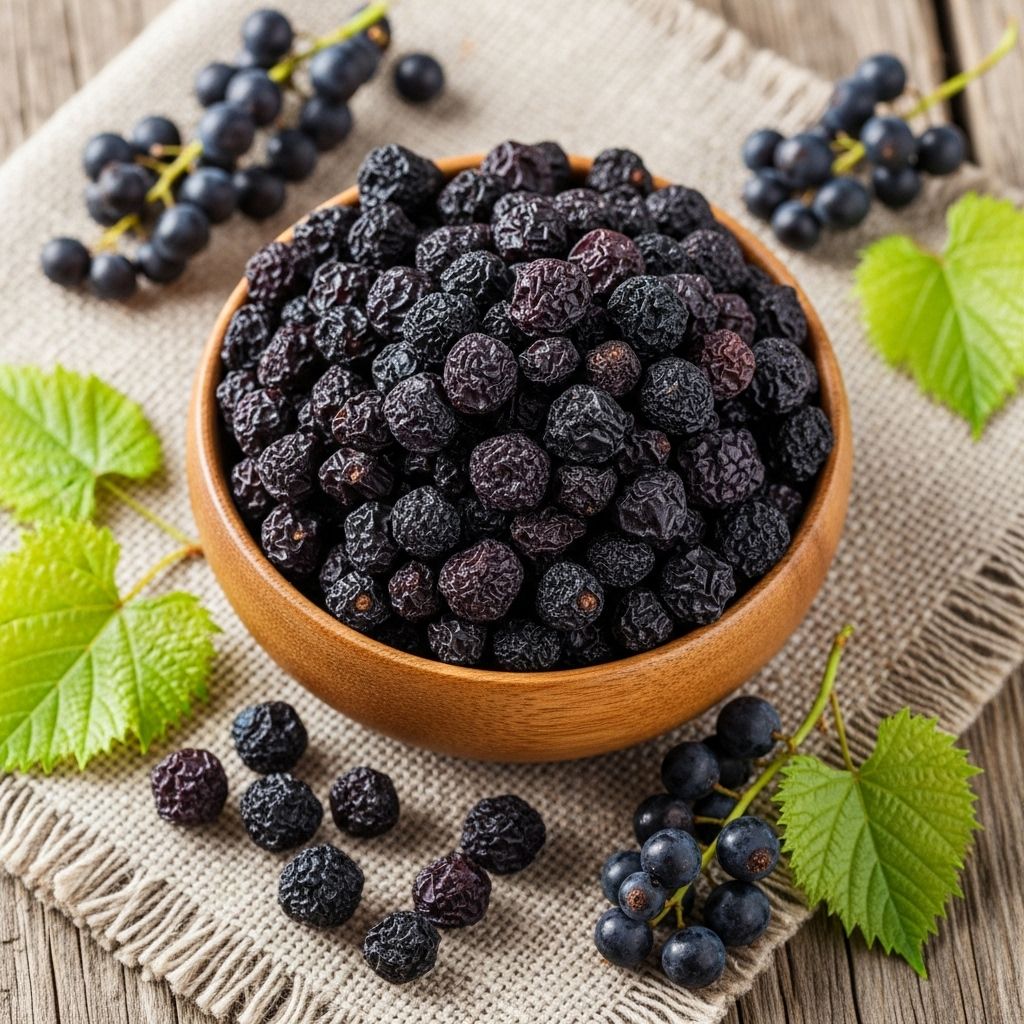What Is Zante Currant (Dried Grape)? Benefits, Uses, and Taste
Exploring the Nutritional Benefits and Culinary Uses of Zante Currants

What Is Zante Currant?
Zante currants are small, dark, seedless dried grapes derived from the Black Corinth grape variety (Vitis vinifera). They originated in the region around Corinth, Greece, and were named after the Ionian island of Zakynthos (Zante), which was once a major producer and exporter. Zante currants are not related to black, red, or white currants, which are berries from the *Ribes* genus and are not typically dried.
Health Benefits of Zante Currants
Zante currants offer several health benefits due to their nutritional content. They are a good source of dietary fiber, which aids digestion and gut health. These dried grapes are also rich in antioxidants like phenolic compounds, which help protect the body against free radical damage. Additionally, they provide essential minerals such as potassium and iron. However, it’s important to consume Zante currants in moderation due to their high sugar content.
- Fiber Content: Zante currants are primarily composed of insoluble fiber, which adds bulk to stool and promotes regularity.
- Antioxidants: The antioxidants in Zante currants, including anthocyanins, have anti-inflammatory and cardioprotective effects.
- Mineral Content: They provide potassium, which is beneficial for blood pressure management, and iron, which is important for healthy red blood cells.
Culinary Uses of Zante Currants
Zante currants are a staple ingredient in many baked goods, such as scones, muffins, and hot cross buns. They are also used in savory dishes like stuffings, sauces, and salads. In traditional British cuisine, they are a key ingredient in fruitcakes, currant buns, and teacakes.
| Recipe | Ingredients |
|---|---|
| Pumpkin Spice Bread | Flour, sugar, pumpkin puree, spices, eggs, and Zante currants |
| Hot Cross Buns | Flour, yeast, milk, sugar, eggs, dried fruits including Zante currants |
Taste and Texture of Zante Currants
Zante currants are known for their sweet and intense flavor, with some currants having a slightly sour taste. They are chewy and soft in texture, making them a delightful addition to various dishes. The drying process concentrates their natural sugars, resulting in a higher sugar content compared to fresh grapes.
History of Zante Currants
Zante currants have a long history that dates back to ancient times. The first written record of the grape was made by Pliny the Elder in 75 AD. They were traded extensively between Venetian merchants and Greek producers from the Ionian coasts. Over time, the name evolved from “raisins of Corinth” to “Zante currant” due to their association with the island of Zakynthos.
Frequently Asked Questions
Q: Are Zante currants the same as black or red currants?
A: No, Zante currants are not related to black or red currants. They are dried grapes from the Black Corinth variety, while black and red currants are berries from the *Ribes* genus.
Q: What are the health benefits of consuming Zante currants?
A: Zante currants provide dietary fiber, antioxidants, and essential minerals like potassium and iron. However, they should be consumed in moderation due to their high sugar content.
Q: Are Zante currants commonly used in cooking?
A: Yes, Zante currants are widely used in baking and cooking, particularly in traditional British desserts and savory dishes.
References
- https://www.wisdomlib.org/ingredients/zante-currants
- https://draxe.com/nutrition/currants/
- https://en.wikipedia.org/wiki/Zante_currant
- https://kids.kiddle.co/Zante_currant
- https://www.finedininglovers.com/explore/articles/everything-you-need-know-about-currants
- https://www.sunmaid.com/products/zante-currants/
- https://forums.egullet.org/topic/152932-dried-currants-what-the-heck-are-they/
Read full bio of Sneha Tete












